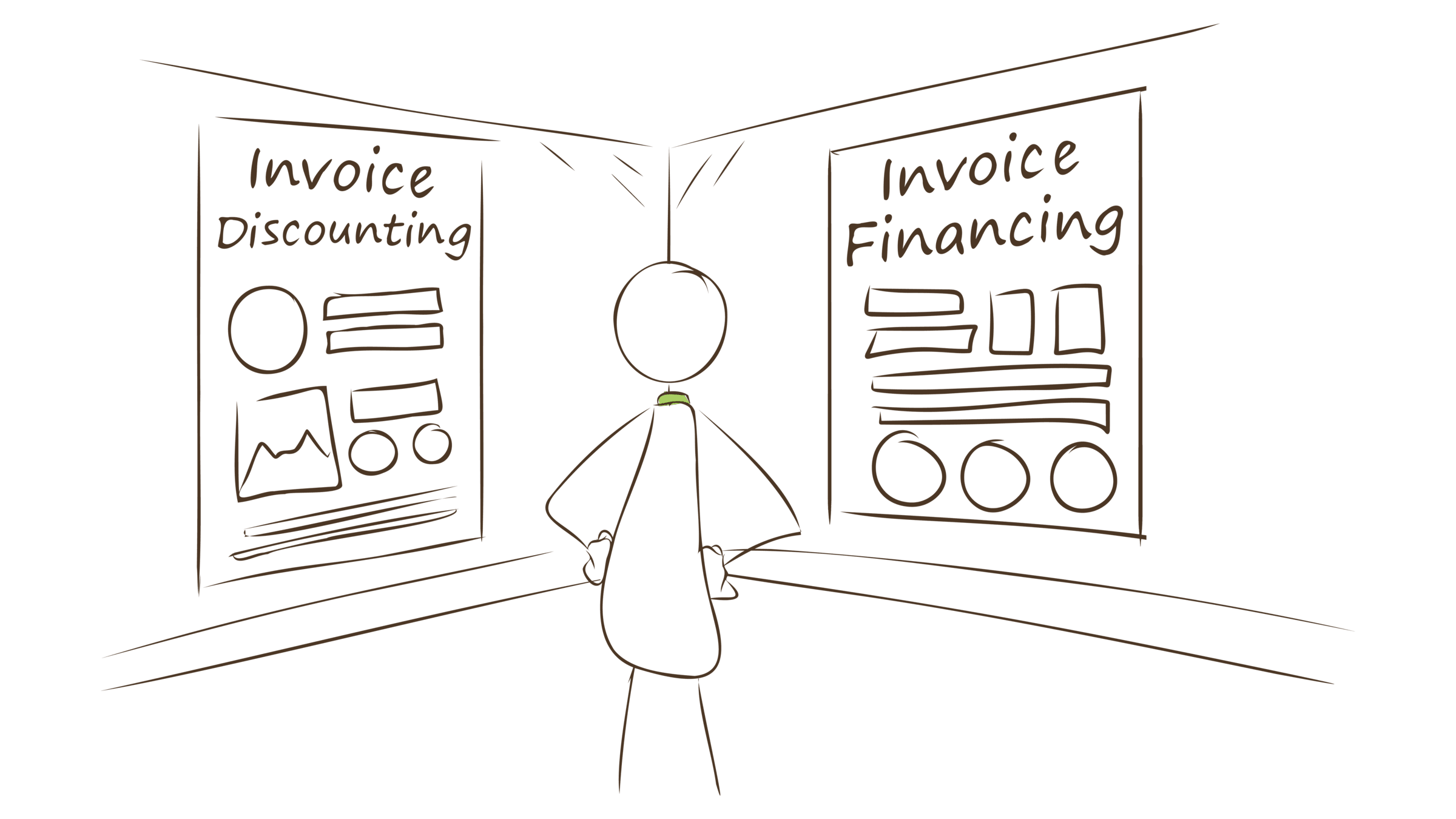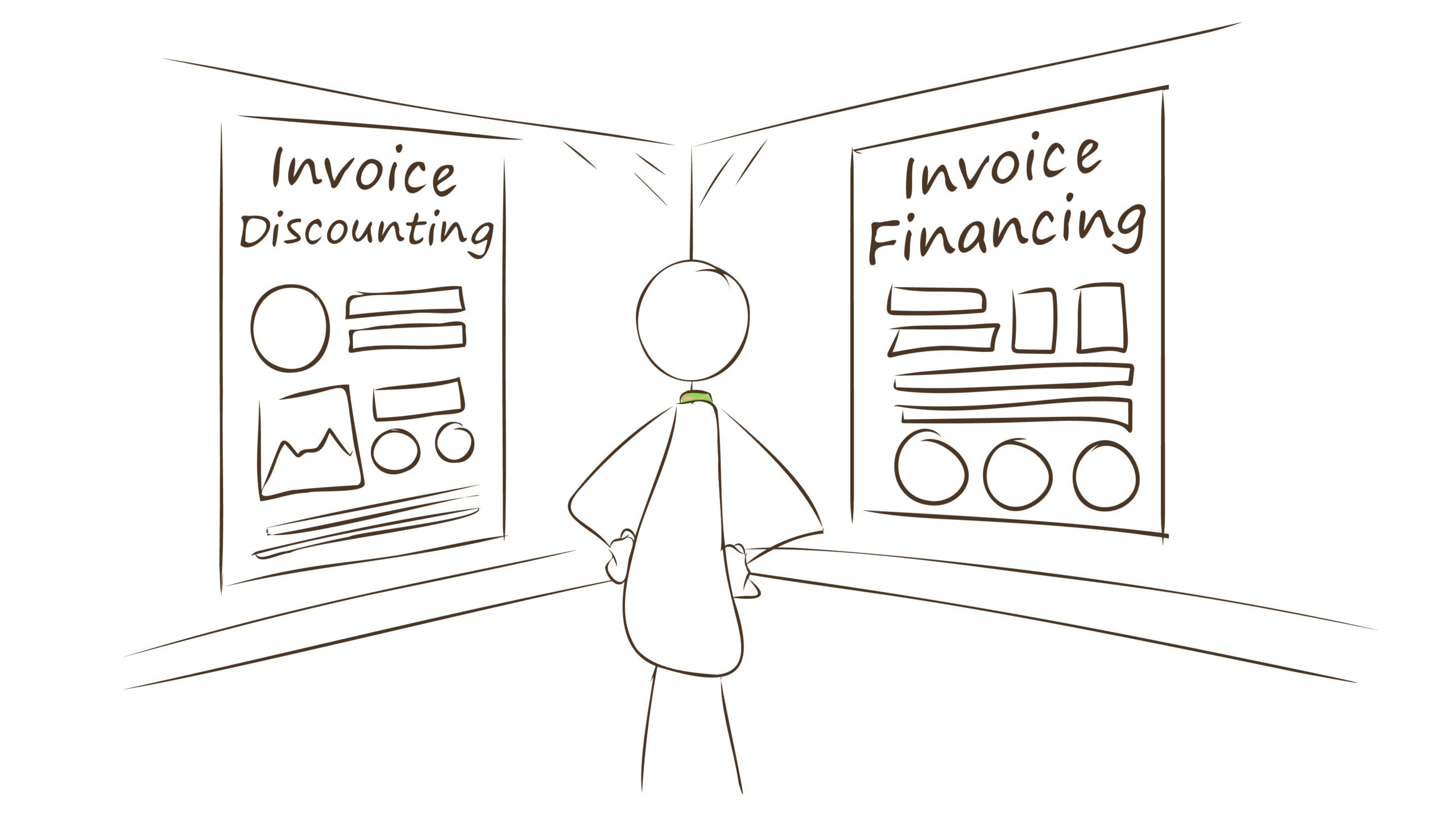

Invoice financing and invoice discounting are two financing options that businesses can utilise to manage their cash flow and access working capital. Invoice financing involves selling unpaid invoices to a financing company, which provides an upfront cash advance while taking over credit control and collections. On the other hand, invoice discounting allows businesses to borrow against their unpaid invoices, retaining control over collections and customer relationships.
Both methods have their advantages and disadvantages. Invoice financing provides immediate cash flow and increased working capital but comes with costs and potential customer perception issues. Invoice discounting offers control, confidentiality, and cost savings, but requires businesses to handle collections and may be less accessible for small and medium-sized enterprises.
Choosing the best option depends on factors such as cash flow management, control preferences, business size and stability, confidentiality, and long-term financial strategy. It is important to evaluate these factors, consider the pros and cons of each option, and seek professional advice to make an informed decision that aligns with the business’s needs and goals.



Invoice financing and invoice discounting are two financing options that offer business owners valuable solutions to manage cash flow and access working capital. Understanding the differences between these methods is crucial for making informed decisions that support business growth and financial stability. Analyse which option is better suited for your business by evaluating the pros and cons of each approach.
In business finance, invoice financing and invoice discounting are two popular options that provide much-needed working capital solutions for businesses. While both financing methods involve leveraging unpaid invoices, there are crucial differences between invoice financing and invoice discounting.
Invoice financing, also known as accounts receivable financing, is a financial tool that enables businesses to access funds tied up in their outstanding invoices. It provides a way to bridge the cash flow gap caused by lengthy payment terms offered to customers. In invoice financing, a business sells unpaid invoices to a financing company or lender at a discounted value. The financing company typically advances a percentage (e.g., 80%) of the invoice’s total value upfront, providing immediate working capital to the business. Once the customer pays the invoice, the financing company releases the remaining balance minus a fee.
Here are the key features of Invoice Financing:
Invoice discounting is a financing solution that allows businesses to borrow against the value of their unpaid invoices without explicitly selling them to a third party. In this arrangement, businesses retain control over the collection process and maintain a direct relationship with their customers. With invoice discounting, the lender provides a pre-approved line of credit based on the value of outstanding invoices. Businesses can borrow funds against these invoices, typically up to 80% of their total value. The business retains the responsibility of collecting payments from customers and repaying the lender along with a discount or interest charges when the invoices are settled.
Here are the key features of Invoice Discounting:
Invoice financing and invoice discounting are effective financial tools that allow businesses to leverage their unpaid invoices for improved cash flow management. Understanding the critical differences between these two options is vital for selecting the approach that aligns with your business needs. Whether you choose invoice financing or invoice discounting, both methods offer valuable solutions for accessing working capital and addressing cash flow challenges. Evaluate your business requirements, consider the advantages of each option, and make an informed decision that supports your long-term financial stability and growth.
When managing cash flow and accessing working capital, businesses often consider invoice financing and discounting viable options. Both methods provide solutions for leveraging unpaid invoices, but determining which suits your business requires careful consideration of a range of factors.
Assess your business’s cash flow needs and goals. Are you looking for immediate cash injections or ongoing access to working capital? Understanding your cash flow requirements will help determine which option better fulfils your needs.
Consider your preferences regarding control and ownership of invoices. Do you want to maintain direct customer relationships and control the collections process, or are you open to outsourcing these tasks to a financing company?
Evaluate the size and stability of your business. Are you an established enterprise with a consistent volume of invoices or a small and medium-sized business seeking accessible financing solutions? Different options may be better suited to your specific business profile.
Consider whether maintaining confidentiality regarding your financing arrangement is essential. Some businesses prefer to keep their use of financing tools discreet, while others are comfortable with customer awareness of a financing company’s involvement.
Selecting between invoice financing and invoice discounting depends on various factors, including your business’s specific needs and preferences. Consider the following when making your decision:
There is no one-size-fits-all answer when choosing between invoice financing and invoice discounting. The decision depends on various factors, including your business’s cash flow requirements, preferences for control and ownership, size and stability, and the importance of confidentiality. By carefully evaluating your business’s unique needs, seeking professional advice, and thoroughly researching financing providers, you can make an informed decision that aligns with your long-term financial goals. Both invoice financing and invoice discounting offer valuable solutions to unlock the working capital trapped in your outstanding invoices, providing the liquidity needed to support your business’s growth, stability, and success.
Invoice financing and invoice discounting are two popular ways businesses can access working capital by leveraging their unpaid invoices. While these financing options offer benefits in terms of cash flow management, they also come with certain drawbacks. You can decide which option suits your business’s financial needs by weighing the pros and cons of invoice financing and invoice discounting.
Invoice financing provides a quick and immediate cash injection into your business, allowing you to promptly address urgent financial obligations, pay suppliers, and invest in growth opportunities.
By converting unpaid invoices into cash, invoice financing increases your working capital, providing funds that can be used for day-to-day operations, business expansion, inventory management, and other vital business activities.
With invoice financing, the financing company handles collections, credit control, and payment processing, transferring the risk of payment delays and bad debts to the financing company. This can protect your business from the negative impact of late-paying customers or non-payment, ensuring a steady cash flow.
Invoice financing can be tailored to your business’s needs, allowing you to choose which invoices to finance and how much to borrow. It offers flexibility to accommodate fluctuating invoice volumes and business growth.
Invoice financing is often accessible to SMEs that may face challenges in obtaining traditional forms of financing. Since it does not require a long history or established customer base, it provides an alternative source of working capital for businesses with limited credit history or access to other funding options.
Invoice financing involves costs and fees that can impact your profit margins. These may include discount charges, service fees, administrative fees, or interest fees. It’s essential to consider and compare the costs of different financing providers carefully.
Some customers may perceive the involvement of a financing company in the collections process as a sign of financial instability. This perception could potentially impact your customer relationships and reputation.
Relying heavily on invoice financing for cash flow needs may create a dependency on external funding. It’s crucial to assess the long-term sustainability of your business’s financial model and consider whether over-reliance on invoice financing aligns with your growth objectives.
Invoice discounting allows you to retain control over the collections process and maintain direct customer relationships. This will enable you to maintain customer satisfaction and handle any potential issues or inquiries that arise during the payment process.
Invoice discounting can be conducted confidentially without disclosing the involvement of a financing company to customers. This can help maintain your brand image and the perception of financial stability and prevent customer concerns about third-party involvement.
Depending on the specific terms and conditions of the financing agreement, invoice discounting may be a more cost-effective option in the long run compared to invoice financing. Since the business remains responsible for collections, businesses can avoid specific fees associated with invoice financing, such as discount charges or interest fees.
Invoice discounting is often more suitable for established businesses with a stable customer base and a consistent volume of invoices. It provides ongoing access to working capital based on the value of outstanding invoices.
With invoice discounting, you retain the responsibility for collections and credit control. This means that you will need to allocate resources and personnel to manage the collections process, including assessing customer creditworthiness, chasing payments, and handling any disputes that may arise. This can place an additional burden on your business’s administrative and operational capacity.
Unlike invoice financing, invoice discounting does not transfer the risk of payment delays or bad debts to a financing company. Your business remains responsible for managing and mitigating the risk of customer non-payment or late payment.
While maintaining control over customer relationships can be an advantage, it also means that any issues or disputes related to payment may need to be resolved directly with the customers. This can potentially strain relationships if not managed effectively.
Invoice discounting may be more challenging for small and medium-sized enterprises (SMEs) to access than invoice financing. It often requires an established credit history, a stable customer base, and consistent invoice volume to secure favourable terms.
Invoice financing provides immediate cash flow, increased working capital, and risk transfer but comes with costs and potential customer perception issues. On the other hand, invoice discounting allows for control, confidentiality, cost savings, and customer relationships, but it requires responsibility for collections and may be less accessible for SMEs.



© 2024. Guavas Finance Ltd



© 2024. Guavas Finance Ltd